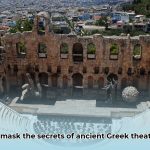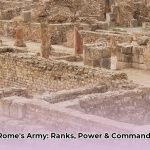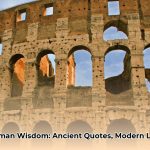Unveiling the Masterpieces: How Ancient Greek Materials Shaped Enduring Architecture and Art
Ever gazed upon the majestic ruins of the Parthenon or marveled at the intricate detail of an ancient Greek vase and wondered, “What were these incredible creations really made of?” Beyond the myths and philosophical treatises, the enduring legacy of ancient Greece is deeply rooted in its masterful understanding and innovative use of available natural resources. Learn about the evolution of its art here. This exploration delves into the foundational materials – stone, wood, clay, and even color – that allowed the ancient Greeks to construct breathtaking temples, craft essential everyday objects, and create a civilization whose aesthetic and engineering principles continue to inspire millennia later. We’ll uncover their ingenious construction techniques, reveal the vibrant hues that once adorned their structures, and discuss how modern research continues to protect these invaluable testaments to human ingenuity.
Ancient Greek architecture, celebrated globally for its harmonious proportions, structural integrity, and lasting beauty, was far more than mere aesthetic achievement. It was a profound reflection of the builders’ ingenuity and their sophisticated command over the natural materials at hand. They meticulously selected resources such as marble, limestone, wood, and various forms of clay and terracotta, each chosen for specific properties related to structural requirements, aesthetic aspirations, and local availability. This strategic material selection, combined with evolving technological prowess, fundamentally shaped the world they built, laying the groundwork for many subsequent architectural traditions.
Stone: The Unyielding Foundation of Classical Grandeur
When envisioning ancient Greek monumental structures, the image of gleaming stone, particularly marble, often comes to mind. Indeed, marble and limestone were the quintessential materials for temples, stoas, and other significant public buildings. Their inherent strength, remarkable durability, and aesthetic versatility contributed immeasurably to the perceived permanence and majestic presence of these architectural marvels. These natural stone resources were not merely building blocks; they were canvases for intricate sculptural elements and testaments to the structural integrity of ancient Greek engineering.
The extraction and shaping of these colossal stones were not trivial feats. The Greeks innovated sophisticated quarrying techniques, especially during the Classical period (c. 510–323 BC), a golden age for architectural innovation. This allowed them to precisely cut and transport massive blocks, enabling the construction of structures like the Parthenon with its iconic fluted columns and elaborate sculptural friezes. The availability of high-quality marble, particularly the renowned Pentelic marble from Mount Pentelicus near Athens, profoundly influenced the architectural style of Athens, fostering a preference for grand, lasting structures that could showcase the material’s luminous quality and fine grain. This consistent access to superior stone undeniably inspired architectural ambition and contributed significantly to the longevity and success of these monumental endeavors.
Wood: The Essential, Yet Elusive, Pioneer of Early Construction
While stone dominates the surviving archaeological record, wood was, in fact, the indispensable material for early Greek construction and remained crucial for less monumental buildings and internal frameworks throughout antiquity. Before sophisticated stone-cutting and quarrying techniques became widespread, wood was the primary structural support, forming roof beams, ceilings, and even early column prototypes. Its abundance, flexibility, and ease of workability made it a practical and accessible option for domestic dwellings and earlier public works.
The transition from wood to stone was a pivotal technological and artistic leap in Greek architecture. However, the wooden origins of Greek architectural forms remained evident, with stylistic elements like the fluting of columns and the triglyphs of the Doric frieze mimicking the ends of wooden beams. While wood was initially easier to procure and work with than stone, its susceptibility to decay, fire, and pests meant that few wooden structures from ancient Greece have survived. This ephemeral nature, coupled with potential deforestation as larger populations demanded more timber, likely contributed to the gradual but decisive shift towards more durable stone constructions for public buildings.
Clay: The Everyday Essential, From Hearth to Home
Clay, transformed into bricks, roof tiles, and a vast array of pottery (ceramics), permeated every aspect of ancient Greek society. Though less glamorous than marble, its versatility and ubiquitous presence made it an absolutely indispensable material for both daily life and construction. From the humble walls of domestic homes to the intricate roof systems of elaborate temples, clay, often in the form of fired terracotta, was a fundamental building block and a canvas for artistic expression.
The consistent availability and relative ease of transforming clay into various forms made it a key driver of architectural innovation, facilitating widespread construction across different social strata. Terracotta tiles, in particular, provided durable, lightweight, and watertight coverings for roofs, a significant advancement in building technology. Archaeological experts often cite clay’s abundance and adaptability as factors that fostered early and widespread architectural development, enabling continuous experimentation with forms and functions in ancient technology.
Color: Beyond the Monochrome Myth of Ancient Structures
When we visualize ancient Greek buildings, a common misconception born from later artistic movements, is that they were pristine, gleaming white. This image is, however, fundamentally inaccurate. Color, or polychromy, was an integral and vibrant element of ancient Greek building design, adding luminosity, dynamism, and symbolic depth to their structures. The Greeks meticulously chose and applied a rich palette of pigments to surfaces of limestone, marble, and terracotta.
The rediscovery of ancient Greek polychromy has revolutionized our understanding of their aesthetic sensibilities. Ongoing studies, supported by meticulous pigment analysis and archaeological findings, have confirmed that temple facades, sculptures, and architectural details were once adorned with striking reds, blues, yellows, greens, and blacks. This vibrant use of color was not merely decorative; it often conveyed specific symbolic meanings related to deities, myths, or the purpose of the building itself. The persistence of the “white marble” myth for centuries underscores a significant misinterpretation of ancient Greek art history, highlighting the importance of continuous archaeological and scientific research in refining our historical perceptions.
The Synergistic Interplay of Materials in Architectural Design
The true genius of ancient Greek builders lay not just in their individual mastery of each material, but in their sophisticated ability to combine them synergistically. This integrated approach resulted in structures that were both structurally robust and aesthetically captivating. Innovations in quarrying techniques for stone, coupled with advancements in clay processing and firing, significantly propelled architectural development, enabling the construction of increasingly complex and resilient buildings. The astute combination of diverse materials stands as a profound testament to their advanced construction skills and deep understanding of material properties.
Consider this detailed table outlining common ancient Greek building materials, their primary uses, and their corresponding advantages and disadvantages:
| Material | Primary Use | Key Advantages | Key Disadvantages |
|---|---|---|---|
| Marble | Temples, Monumental Public Buildings, Statues, High-relief Sculpture | Superior durability and strength; exceptional aesthetic appeal with luminous quality and fine grain; capable of exquisite detail for intricate carvings and highly polished surfaces; reflects light beautifully, creating a dynamic interplay of light and shadow; resists erosion better than limestone; symbolic association with divinity and eternity; ideal for lasting monuments. | Extremely expensive due to rarity and labor-intensive extraction; requires highly specialized skills and sophisticated tools for quarrying, carving, and transportation; massive weight demands robust structural support and logistical planning; can be prone to staining from pollutants or natural elements over long periods; availability limited to specific quarry locations, often requiring long-distance transport. |
| Limestone | Foundations, Walls, Columns (Early & Less Grand Structures), Substructures | Widely available across Greece, making it a cost-effective and practical choice; relatively easier to quarry and shape with simpler tools compared to marble; provides good strength for foundational elements and load-bearing walls; weathers reasonably well in many climates; suitable for stucco application to emulate marble; used extensively in early monumental architecture before widespread marble adoption. | Less visually striking or refined than marble, often requiring stucco or paint for aesthetic enhancement; more porous than marble, making it susceptible to water absorption and freeze-thaw cycles; can be vulnerable to acid rain and environmental pollution, leading to erosion and discoloration; not suitable for the finest, most intricate sculptural details due to its coarser grain; can be more brittle and prone to cracking under extreme stress compared to marble. |
| Wood | Structural Supports (Roofs, Ceilings, Internal Frameworks), Early Columns, Furniture, Tools | Abundant and readily available in forested regions (initially); lightweight and easy to work with using basic tools; provides flexibility in construction and allows for relatively rapid erection; good thermal insulation properties; easily replaceable if damaged; formed the foundational prototypes for later stone architectural orders. | Highly susceptible to rot, decay, insect infestations (like termites), and fire; less durable and long-lasting than stone, requiring frequent maintenance or replacement; limited load-bearing capacity compared to stone, restricting span capabilities; excessive demand led to deforestation over time; vulnerable to weather elements, leading to warping or cracking if not properly protected; archaeological evidence is scarce due to its perishable nature. |
| Clay | Bricks, Roof Tiles, Pottery (Vessels, Figurines), Plaster, Mortar, Terracotta Ornamentation | Exceptionally versatile, allowing for diverse applications from utilitarian objects to architectural components; inexpensive and universally available; when fired (as terracotta), it becomes fire-resistant and highly durable; excellent thermal mass for regulating indoor temperatures; easily molded into an endless variety of shapes; crucial for sanitation (pipes) and water management systems; forms the basis for decorative ceramics with intricate artistic expression. | Can be brittle and prone to cracking if not properly prepared or fired; susceptible to water damage and erosion if unfired or poorly vitrified; unbaked bricks require protection from rain; fired ceramics can be heavy and fragile, breaking upon impact; less strong than stone for primary structural elements; susceptible to freeze-thaw cycles if internal moisture is present; color can fade or change over time with prolonged exposure to UV rays and elements, especially on unglazed surfaces. |
| Terracotta | Roof tiles, Architectural Ornamentation, Statues (Early), Sarcophagi | Waterproof when fired, making it ideal for robust roof systems; durable and long-lasting; moldable into intricate designs for decorative elements; lighter weight than stone, reducing structural load; highly resistant to fire; can be glazed for added protection, increased durability, and enhanced aesthetic appeal; widely available due to clay’s abundance. | Can be fragile before and after firing, susceptible to chipping and cracking from impact; limited load-bearing capacity for primary structural elements; requires high temperatures for proper firing, demanding significant fuel resources; color can be somewhat limited without glazes, and unglazed colors may fade over time; less prestigious than marble for grand sculptural works, often used for smaller, more decorative elements; vulnerable to external stress if not properly supported or installed. |
Actionable Intelligence for Today: Preserving Ancient Heritage
The profound knowledge embedded within ancient Greek construction techniques and material science offers invaluable insights for contemporary conservation, archaeological research, and academic pursuits. Understanding not only what materials were used, but how they were selected, processed, and combined, directly informs modern efforts to preserve these irreplaceable historical treasures.
Here are strategic steps that can be followed to integrate and leverage this historical wisdom for modern applications:
- Architectural Historians & Archaeologists: Initiate and support interdisciplinary research that combines architectural analysis with material science. Diligently scrutinize the architectural remains using advanced non-destructive testing methods (e.g., ground-penetrating radar, laser scanning, spectrography) to gain a precise understanding of their material composition, structural behavior, and construction sequences. Pinpoint specific material sources and processing techniques to shed light on contentious areas of historical debate and refine our understanding of ancient building design principles. Trace the evolution of material use through different periods and regions, correlating it with socio-economic, technological, and cultural shifts.
- Preservationists & Conservation Scientists: Implement gentle, non-invasive methods, guided by historical material knowledge, to assess the structural integrity and material degradation of ancient structures. Conduct comprehensive investigations into how modern environmental factors like climate change, industrial pollution, and seismic activity affect these historical materials over long periods. Develop and refine effective, reversible conservation strategies that respect the original materials and techniques, ensuring the long-term stability and authenticity of the structures. This includes innovative consolidation techniques, protective coatings, and climate control where appropriate, always prioritizing minimal intervention.
- Educators & Public Outreach Specialists: Significantly integrate the study of ancient Greek materials and construction methods into curricula across disciplines, from history and archaeology to engineering and art history. Develop and facilitate engaging, hands-on activities, such as model building with historically accurate materials or virtual reality reconstructions, to allow students and the public to learn experientially about ancient Greek building and design principles. Create accessible digital resources (e.g., interactive maps of quarries, 3D models of construction processes) to disseminate cutting-edge research findings broadly, fostering a deeper appreciation for ancient engineering and artistry.
How Did Greek Coloring Work? Unveiling Polychromy
Key Takeaways:
- Ancient Greek art and architecture were vibrant and colorful, fundamentally contradicting the long-held misconception of pristine white marble.
- The widespread use of polychromy (multi-color application) challenges traditional art historical narratives, revealing the ancient Greeks’ advanced artistic skills and sophisticated cultural understanding of color’s power.
- Pigments, meticulously derived from natural minerals and, remarkably, sophisticated synthetic compounds, played a crucial role in artistic expression, communication, and conveying social or divine status.
- Museums, researchers, educators, and students are actively involved in reevaluating and presenting the colorful reality of ancient Greek art through ongoing archaeological findings and digital reconstructions.
- Ethical color reconstruction, guided by meticulous pigment analysis and historical context, is an essential component of modern archaeological research, ensuring accuracy in historical interpretation.
The Myth of White Marble in Classical Art: A Modern Misconception
For centuries, the Western world has romanticized ancient Greek sculptures and monumental buildings as gleaming, untouched white marble. This pervasive image, largely propagated during the the European Renaissance and Neoclassical periods when classical forms were “rediscovered” in their weathered, unpainted state, is, however, a profound misinterpretation. Renaissance scholars, captivated by the pure forms, mistakenly believed that the surviving, unpainted marble was the original state, overlooking critical evidence of applied color. Modern archaeological discoveries, coupled with advanced scientific pigment analysis techniques, have now definitively proven that the ancient Greeks employed an extensive and vibrant array of colors – known as polychromy – to bring their art and architecture to life.
Unveiling the True Colors of Ancient Greece: Pigments and Application
So, how did Greek coloring work in practice, transforming seemingly stark stone into dynamic, expressive forms? The Greeks were highly skilled in the application of color, utilizing a diverse palette of pigments derived from both readily available natural minerals and, in some cases, surprisingly advanced synthetic compounds. Reds, yellows, blues, blacks, and greens were commonly employed, adorning everything from the intricate drapery of a statue to the prominent friezes and pediments of temples. These colors added essential depth, highlighted intricate details, and conveyed profound symbolic meaning to their creations. Imagine the Parthenon, not as a stark white monument, but as a vibrant tapestry of colors against the Athenian sky, a testament to their sophisticated building design and artistic vision!
The pigments they commonly used included:
- Red: Primarily sourced from ochre, a naturally occurring earth pigment rich in iron oxide, providing a range of warm, earthy tones from deep crimson to lighter terracotta. Cinnabar (mercuric sulfide) was also used for brighter, more intense reds, though it was rarer and more costly.
- Yellow: Derived from various types of ochre (iron hydroxides), yielding shades from pale cream to deep golden yellow. Orpiment (arsenic sulfide) provided a brilliant, vivid yellow, but was highly toxic.
- Blue: Egyptian blue, a groundbreaking synthetic pigment, was a highly prized and costly color. Created by heating a mixture of silica, copper, and calcium compounds at high temperatures, it produced a stable, vibrant blue. Earlier Aegean cultures also utilized more natural, mineral-based pigments like glaucophane for bluer hues.
- Black: Sourced primarily from charcoal or soot, providing deep, rich black hues. Bone black (charred animal bones) was also employed for a denser black.
- White: Typically made from lime (calcium carbonate) or gypsum (hydrated calcium sulfate), serving as a base coat to prime surfaces or as an independent opaque color.
The application of these pigments was a meticulous process, often involving multiple layers and different binding media. Insights from sources like archaeological findings and ancient texts (e.g., Pliny the Elder) suggest the use of techniques such as tempera (pigments mixed with egg yolk or animal glue) and, notably, encaustic painting. Encaustic, which involved mixing pigments with heated wax, allowed for rich, deep colors, excellent durability, and a potential for glossiness. While the precise methods used on monumental structures like the Parthenon are still subjects of ongoing art historical research and scientific debate, the evidence of widespread and sophisticated color application is undeniable.
The Profound Significance of Color in Ancient Greek Culture
Color was far more than mere ornamentation or visual appeal; it carried profound symbolic meaning and played a crucial role in communicating complex ideas within ancient Greek culture. The careful selection and precise application of colors conveyed specific messages about the depicted figures, the narrative stories being told (especially on friezes and pediments), and the overall purpose and sanctity of the artwork or building. For instance, red could signify power, intense passion, warfare, or even divinity, depending on its context. Blue might represent the heavens, divine protection, or the sea.
The Greeks inherently understood the psychological and communicative power of color to evoke emotions, reinforce social hierarchies, and shape public perceptions of their architecture and three-dimensional art. The vibrancy of their painted structures would have made temples stand out against the landscape, serving as vivid, dynamic focal points for religious worship and civic pride.
| Color | Possible Symbolic Meanings |
|---|---|
| Red | Power, passion, divinity, sacrifice, heroism, warfare, blood, vitality. Often associated with male figures, gods like Ares, or heroic narratives. |
| Black | Death, the underworld, mourning, mystery, earth, chaos, night. Used for outlining, shadows, or depicting negative spaces. Often associated with older deities or chthonic forces. |
| White | Purity, innocence, peace, clarity, divine light, truth. Used for female skin, divinity, or as a unifying base coat. Implied spiritual and moral purity. |
| Yellow | Wealth, prosperity, sunlight, gold, divine radiance, harvest, fertility. Often used for hair, garments, or architectural details to evoke richness and warmth. |
| Blue | Royalty, the heavens, the sea, truth, wisdom, divine protection, distant horizons. Less common in early periods due to pigment cost, but became significant. Associated with gods like Zeus (sky) and Poseidon (sea). |
| Green | Nature, fertility, growth, harmony, regeneration. Used for foliage, landscapes, and sometimes drapery. Symbolized life and the natural world. |
The Ongoing Rediscovery and Reconstruction of Ancient Polychromy
The definitive rediscovery of polychromy has profoundly revolutionized our understanding of ancient Greek art and architecture, demanding a global reevaluation of classical aesthetics. Museums and art institutions worldwide are now actively incorporating digital reconstructions, interactive exhibits, and physical replicas with applied color to showcase the vibrant reality of these ancient creations. This offers a far more accurate and dynamic historical perspective to the public. Researchers continue to employ advanced, non-destructive pigment analysis techniques (such as X-ray fluorescence, Raman spectroscopy, and UV-Vis reflectance spectroscopy) to uncover further secrets about the specific chemical composition of the colors used, the precise methods of application, and the chronological evolution of coloring practices, constantly refining our knowledge of ancient building materials and art history.
While some scholarly debates persist regarding the exact saturation, luminosity, and application style of the colors, or the ethical considerations surrounding complete physical reconstructions, it is unequivocally clear that ancient Greek art was far more colorful and expressive than centuries of misinterpretation had allowed us to imagine. This ongoing rediscovery challenges us to re-evaluate our long-held perceptions of the past and appreciate the full artistic skill, technical mastery, and profound cultural sophistication of the ancient Greeks, especially in their masterful and symbolic use of color in architectural design and sculpture.
Marble Versus Limestone in Ancient Greece: A Definitive Comparison of Architectural Evolution
Key Takeaways:
- Early Greek architecture predominantly relied on limestone due to its abundant availability, ease of quarrying, and workability with nascent tools.
- The widespread adoption of marble, particularly from the Classical period onwards, signified a major leap, favored for its enhanced durability, refined aesthetics, and superior potential for intricate detailing.
- The construction of the Parthenon, a pinnacle of ancient Greek architectural achievement, serves as the ultimate testament to this strategic and deliberate shift to marble, showcasing its unparalleled beauty and longevity.
- Geographical factors, including the proximity to high-quality quarries, and evolving cultural values, emphasizing perfection and lasting grandeur, profoundly influenced the regional selection of building materials.
- The transition from limestone to marble reflects significant advancements in quarrying technology, transportation logistics, and a progressive evolution in architectural ideals towards greater sophistication, precision, and monumental scale.
Early Dominance of Limestone in Building Materials: The Practical Choice
Why did ancient Greek builders initially favor limestone for their monumental structures, particularly during the Archaic period (c. 800–500 BC)? The answer lies primarily in its pervasive availability across the Greek landscape and its relative ease of extraction and carving compared to harder, more crystalline stones. Limestone, a sedimentary rock abundant in various regions, was the practical and cost-effective choice for erecting early temples and other significant public buildings. Early monumental structures, such as the impressive Temple of Apollo at Corinth (dating to the mid-6th century BC) and the foundational Temple of Hera at Olympia (c. 600 BC), clearly demonstrate limestone’s prevalence in ancient Greek building design. With less advanced tools and techniques, it was the most accessible material for large-scale construction. However, limestone’s inherent porous nature made it vulnerable to the erosive effects of the elements, especially in the humid coastal climates, often leading to a weathered appearance over time and prompting a subsequent search for more resilient and aesthetically pleasing building materials.
The Ascendance of Marble as a Preferred Material: Elevating Aesthetics and Durability
What catalyzed the profound transformation in the ancient Greek architectural landscape, shifting from robust limestone to the sublime beauty of marble? The undeniable allure and superior physical properties of marble, a metamorphic rock formed from limestone under immense heat and pressure, offered a compelling and superior solution. Marble boasted significantly greater strength, higher density, and a distinctly more refined and luminous appearance than limestone. Its crystalline structure provided enhanced resistance to weathering and erosion, while its fine-grained texture enabled the creation of exquisite, razor-sharp details and highly polished surfaces that could capture and reflect light dramatically. The Parthenon, an iconic symbol of ancient Greek architecture completed in 432 BC, built almost entirely of Pentelic marble, profoundly embodies this pivotal shift in material preference, showcasing marble’s supreme aesthetic versatility and unparalleled durability. This transition marked a clear evolution in architectural ambition, moving towards structures that not only lasted but also captivated with their visual splendor.
Pentelic Marble and Its Revolutionary Architectural Impact on Athens
How did the discovery and extensive exploitation of Pentelic marble specifically revolutionize Athenian architecture and contribute to its “Golden Age”? The quarries located on Mount Pentelicus, just northeast of Athens, supplied the pristine
- Unearth ancient rome achievements: Engineering feats & legal legacies, examined - August 13, 2025
- Unlock ancient rome army ranks: Power, impact & legion command - August 13, 2025
- Conquer Your Exam: Ancient Greece Quiz Ace It Now! - August 13, 2025
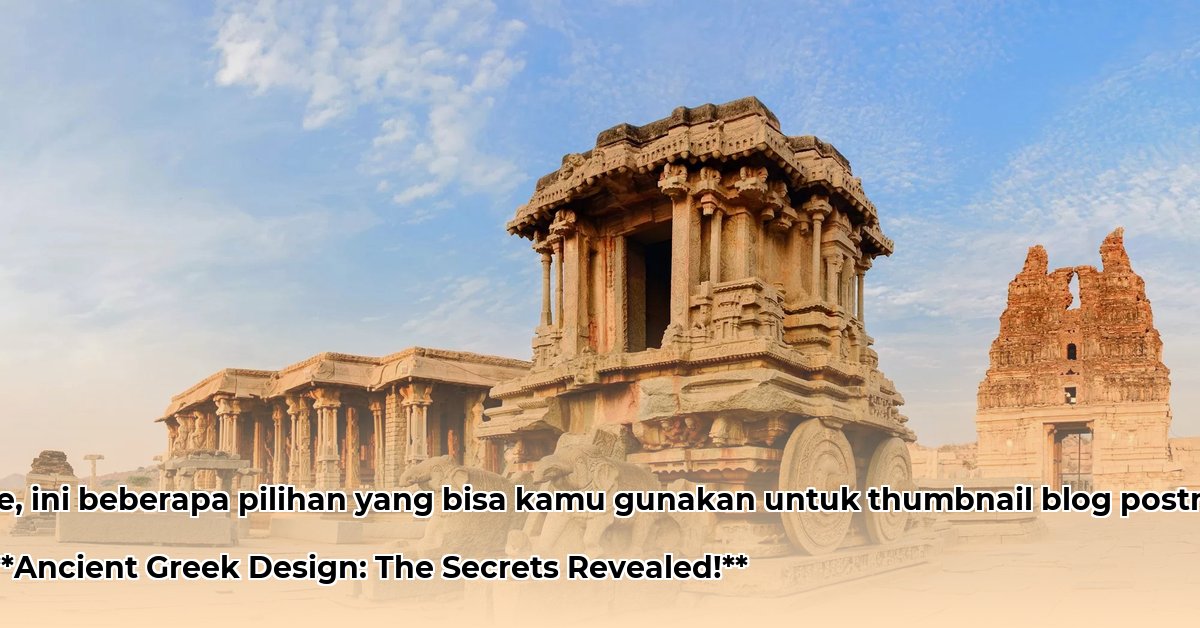
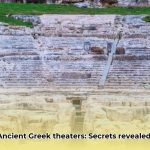


![Unveiling Ancient [black people in ancient greece]: New Civilizations Insights, Challenging History black_people_in_ancient_greece_edited](https://www.lolaapp.com/wp-content/uploads/2025/08/black_people_in_ancient_greece_edited-150x150.jpg)

